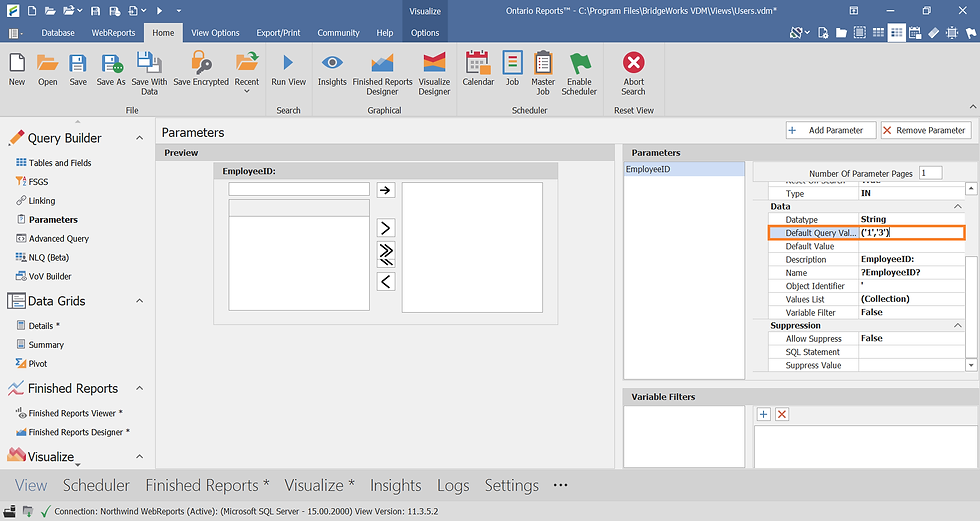Parameters - Default Query Value
- Cory Fifield

- Aug 8, 2022
- 2 min read
Trouble seeing the images? Click on images or open in new tab to enlarge or zoom in on the page (Ctrl + mousewheel).
In this week's article I want to go over the steps to use Default Query Value in VDM.
Why Use Default Query Value?
The Default Query Value is the value that is used when nothing is selected for a parameter at run time.
Example: An IN parameter with the values 1, 2 and 3. None of them are selected during run time but the Default Query Value is set to ('1', '2', '3').
Important Notes:
Default values will have priority over Default Query value (default is set in the parameter wizard, therefore the value is not empty)
It is recommended to NOT have a Default Value if a Default Query Value is set.
Reset on Search can be useful for clearing out any previously selected values.
Default Query Value (DQV) does not observe the specified object identifier or IN statement structures (EXAMPLE: the parenthesis around the value). What is inserted into the Default Query Value is a one for one replacement in the SQL statement.
Using Default Query Value
1. Open VDM and run your view.

2. Click on Parameters.

3. Add or modify a parameter.

OPTIONAL: Enable the Reset on Search option.

4. Set the values for the Default Query Value (DQV).
Note/Reminder: DQV does not observe the specified object identifier

5. Finish any other parameter modifications and then click off the selected parameter to save the changes.
6. Run the view without selecting any values and verify the Default Query Value being sent gets the desired results.
Selected Parameters at Run Time: None

Results: View ran for EmployeeID 1 and 3





Comments